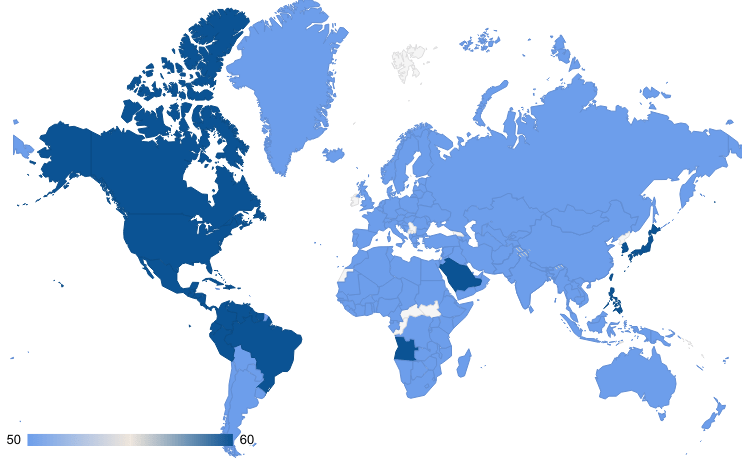Electricity is the same around the globe, right? Well not quite, no! Different countries use different frequencies, which can be a real pain if you plan to use your equipment overseas.
In order to clear up the minefield that is power supply across the globe, we’ve put together the ultimate guide to international power frequencies; providing you with all the information you need to make informed decisions!
Why do different countries have different frequencies?
You might assume that the mains power supply would be the same wherever you go, but it simply isn’t the case. So who can you thank for this inconvenience? Well, it all dates back to the late 1880s when Thomas Edison and Nikola Tesla had conflicting ideas about bringing electricity into homes across New York.
Edison wanted to use Direct Current (DC), whereas Tesla proposed the use of Alternating Current (AC). Tesla declared the best frequency to use was 60Hz at 240 volts, whereas Edison relied on a lower voltage system of around 110 V.
Not wanting to lose out to his competitor, Edison spread his opinion that 240 volts was far too high for use in the home and many local residents agreed, believing it would be too dangerous. Edison’s scaremongering worked, though the decision ultimately went in Tesla’s favour, with New York adopting an AC supply at 110 volts and 60Hz.
Word soon spread and other countries began implementing their own mains power supply; however, companies in Europe, like BEW and AEG, controversially decided to go with 50Hz rather than 60Hz. Neighbouring countries followed suit and before you knew it this 50Hz design had been accepted across the continent.
So, we’ve now got the US running their power supply at 60Hz and the majority of Europe using 50Hz – but it doesn’t end there… To further complicate things, countries like Britain, Spain, France, Portugal, etc. then began implementing their 60Hz power supply systems in their colonies across Asia and Africa.
As no international standard was ever set, countries stuck to their initial frequencies and here we are over 100 years later!
Worldwide Frequencies
Now we know why countries have differing frequencies, let’s break it down and examine the frequencies of each country.
50Hz vs 60Hz Countries
The two main power frequencies used across the globe are 50Hz or 60Hz (Hertz), and the majority of countries favour a 50Hz frequency for their mains supply, though there are still a significant number of countries using a 60Hz supply.
So, which countries use 60Hz? Take a look at the table below to discover more.
| Frequency | Country |
|---|---|
| 60Hz | American Samoa, Anguilla, Antigua, Aruba, Bahamas, Belize, Bermuda, Brazil, Canada, Cayman Islands, Colombia, Costa Rica, Cuba, Dominican Republic, Ecuador, El Salvador, Guam, Guatemala, Guyana, Haiti, Honduras, South Korea, Mexico, Micronesia, Montserrat Islands, Nicaragua, Okinawa, Palmyra Atoll, Panama, Peru, Philippines, Puerto Rico, St. Kitts & Nevis Islands, Saudi Arabia, Suriname, Tahiti, Taiwan, Trinidad & Tobago, United States (USA), Venezuela, Virgin Islands |
| 50Hz | Afghanistan, Albania, Algeria, Andorra, Angola, Argentina, Armenia, Australia, Austria, Azerbaijan, Azores, Bahrain, Balearic Islands, Bangladesh, Barbados, Belarus, Belgium, Benin, Bhutan, Bolivia, Bosnia, Botswana, Brunei, Bulgaria, Burkina Faso, Burundi, Cambodia, Cameroon, Canary Islands, Cape Verde, Central Africa, Chad, Channel Islands, Chile, China, Comoros, Congo (Zaire), Cook Islands, Ivory Coast, Croatia, Cyprus, Czech Republic, Denmark, Djibouti, Dominica, East Timor, Egypt, Equatorial Guinea, Eritrea, Estonia, Ethiopia, Faeroe Islands, Falkland Islands, Fiji, Finland, France, French Guyana, Gaza, Gabon, Gambia, Germany, Ghana, Gibraltar, Greece, Greenland, Grenada, Guadeloupe, Guinea, Guinea-Bissau, Hong Kong, Hungary, Iceland, India, Indonesia, Iran, Iraq, Ireland, Isle of Man, Israel, Italy, Jamaica, Jordan, Kenya, Kazakhstan, Kiribati, Kuwait, Kyrgyzstan, Laos, Latvia, Lebanon, Lesotho, Liberia, Libya, Lithuania, Liechtenstein, Luxembourg, Macau, Macedonia, Madagascar, Madeira, Malawi, Malaysia, Maldives, Mali, Malta, Martinique, Mauritania, Mauritius, Moldova, Monaco, Mongolia, Morocco, Mozambique, Myanmar, Namibia, Nauru, Nepal, Netherlands,Netherlands Antilles, New Caledonia, New Zealand, Niger, Nigeria, Norway, Oman, Pakistan, Papua New Guinea, Paraguay, Poland, Portugal, Qatar, Réunion Island, Romania, Russian Federation, Rwanda, St. Lucia Island, St. Vincent Island, Senegal, Serbia & Montenegro, Seychelles, Sierra Leone, Singapore, Slovakia, Slovenia, Somalia, South Africa, Spain, Sri Lanka, Sudan, Swaziland, Sweden, Switzerland, Syria, Tajikistan, Tanzania, Thailand, Togo, Tonga, Tunisia, Turkey, Turkmenistan, Uganda, Ukraine, United Arab Emirates, United Kingdom, Uruguay, Uzbekistan, Vietnam, Western Samoa, Yemen, Zambia |
Interestingly, the frequency in Japan isn’t even uniform across the country! Areas in the east, like Tokyo, operate on 50Hz, whereas areas in the west like Osaka and Kyoto use a 60Hz power supply.
The image below shows countries that have a power frequency of 50Hz in light blue and 60Hz in dark blue.


